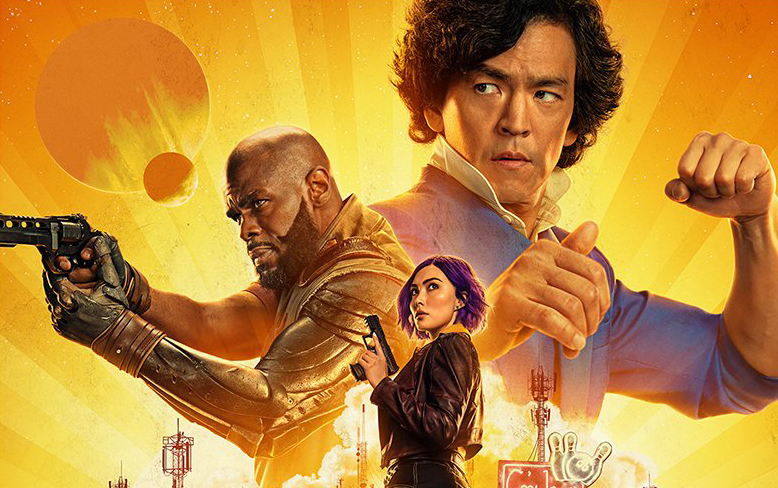TV Review: ‘Cowboy Bebop (2021),’ All Jazz, No Soul
It’s a running gag that Netflix’s live-action anime adaptations never live up to the source material, and I’m greatly disappointed to say that the new release of Cowboy Bebop does not buck that trend.
Like the original 1998 animated series, Cowboy Bebop follows a group of eternally broke bounty hunters through their misadventures in 2071, drawing heavily on noir and western aesthetics, and of course, the jazz style the series is most known for.
The new series sees John Cho take up the role of Spike Spiegel, a bounty hunter with less of a death wish and more of a death ambivalence. While Cho clearly has a passion for the character, he ultimately often lacks the relaxed confidence that made both Kōichi Yamadera and Steve Blum’s original portrayals so beloved, likely due to the weak script he was given to work with. Still, for the different take on Spike that the show puts forth, Cho generally hits everything he needs to.
Mustafa Shakir also delivers probably the strongest performance of the main cast as Spike’s longtime friend and partner, Jet Black. Although he doesn’t quite have the original voice down either, he fits the role effortlessly, and his chemistry with Cho definitely does justice to the relationship between their two characters.
To be certain, the show certainly has some things going for it. The classic soundtrack by the Seatbelts is as incredible now as it was 23 years ago, even if it ultimately isn’t used quite as effectively. The showrunners also seem to have a decent understanding of the original’s aesthetics, with every part of the 2021 series’ world looking appropriately lived-in.
However, there are a few things that start to drag the show down. Most of the writing in the show is mediocre, but when going up against the original series’s titan, that could be a death sentence of its own. Combined with the halfhearted attempts to cram in lines from the original and the utterly out-of-place Whedonesque quips, it all starts to feel very fanfiction-like as the show goes on.
This also gets combined with the show’s very awkward cinematography, which seems to have been born out of the idea that the only problem with the blandest possible filming techniques is that the camera isn’t also at an awful angle the whole time.
These combine to the thing that really kills the show, which is the utter stiffness that permeates it. The original series lived and died one single thing more than the other, which was its understated, almost laissez-faire tone. Everything from the writing to the animation felt smooth and utterly effortless, which paradoxically required immense skill and understanding of style that this new version lacks.
In the opening of every episode of the original series, the viewer can read the following text:
“Once upon a time, in New York City in 1941… at this club open to all comers to play, night after night, at a club named “Minston’s Play House” in Harlem, they play jazz sessions competing with each other. Young jazz men with a new sense are gathering. At last, they created a new genre itself. They are sick and tired of the conventional fixed style jazz. They’re eager to play jazz more freely as they wish then… in 2071 in the universe… The bounty hunters, gathering in the spaceship “BEBOP”, will play freely without fear of risky things. They must create new dreams and films by breaking traditional styles. The work, which becomes a new genre itself, will be called… COWBOY BEBOP.”
This idea of freestyle in life and art is the absolute heart of the original series and is utterly critical to what made it work. In trying so hard to imitate the original, this version of Cowboy Bebop ironically loses the relaxed soul of the series.

CJ has been at Brimmer since her freshman year and has been a member of the newsroom since the beginning of the 2019-20 school year. Outside of writing for The Gator, she is a huge film buff and a member of the Robotics Team as a designer and builder.





















































